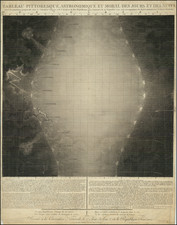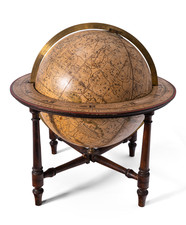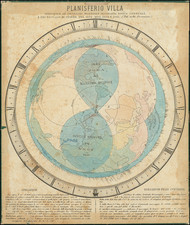This intricately designed image presents a collection of astronomical instruments from the late Renaissance period, showcasing the advanced technological and scientific understanding of that era. These instruments, primarily used for navigating the stars and understanding celestial movements, reflect the heightened curiosity and expanding knowledge of the universe during this time.
The main feature, Fig. I., appears to be a large astrolabe, a multifunctional device used by astronomers, navigators, and astrologers to solve problems related to time and the position of the Sun and stars in the sky. Astrolabes are historically significant as they represent one of the earliest uses of applied mathematics in human history, and this particular illustration details an instrument of remarkable complexity and precision, indicative of the intellectual achievements of its time.
Below and surrounding the astrolabe are depictions of various other astronomical devices including quadrants, armillary spheres, and sundials (Figures IV, V, and II respectively). Each of these instruments played a vital role in the development of astronomy, navigation, and timekeeping. For instance, the armillary sphere (Fig. V) was crucial for modeling the celestial sphere and understanding the apparent motion of the stars around the Earth, reflecting the geocentric model prevalent until the Copernican revolution.
The inclusion of these instruments in a single illustration suggests the image was part of a comprehensive treatise on astronomy or navigation, aimed at educating or assisting scholars and seafarers of the period. It offers a window into the technological advancements of the time, as well as the persistent human quest to understand the cosmos.









![Terrestrial Globe containing all the latest Discoveries and Geographical Improvements also the Tracks of the most celebrated Circumnavigators [with] Cary's New Celestial Globe, on which are correctly laid down upwards of 3500 Stars Selected from the most accurate observations and calculated for the Year 1800.](https://storage.googleapis.com/raremaps/img/small/87675.jpg)
![[ Astronomical Devices ]](https://storage.googleapis.com/raremaps/img/small/102954.jpg)


![[Terrestrial Globe Gore] and [Celestial Globe Gore]](https://storage.googleapis.com/raremaps/img/small/91969.jpg)
